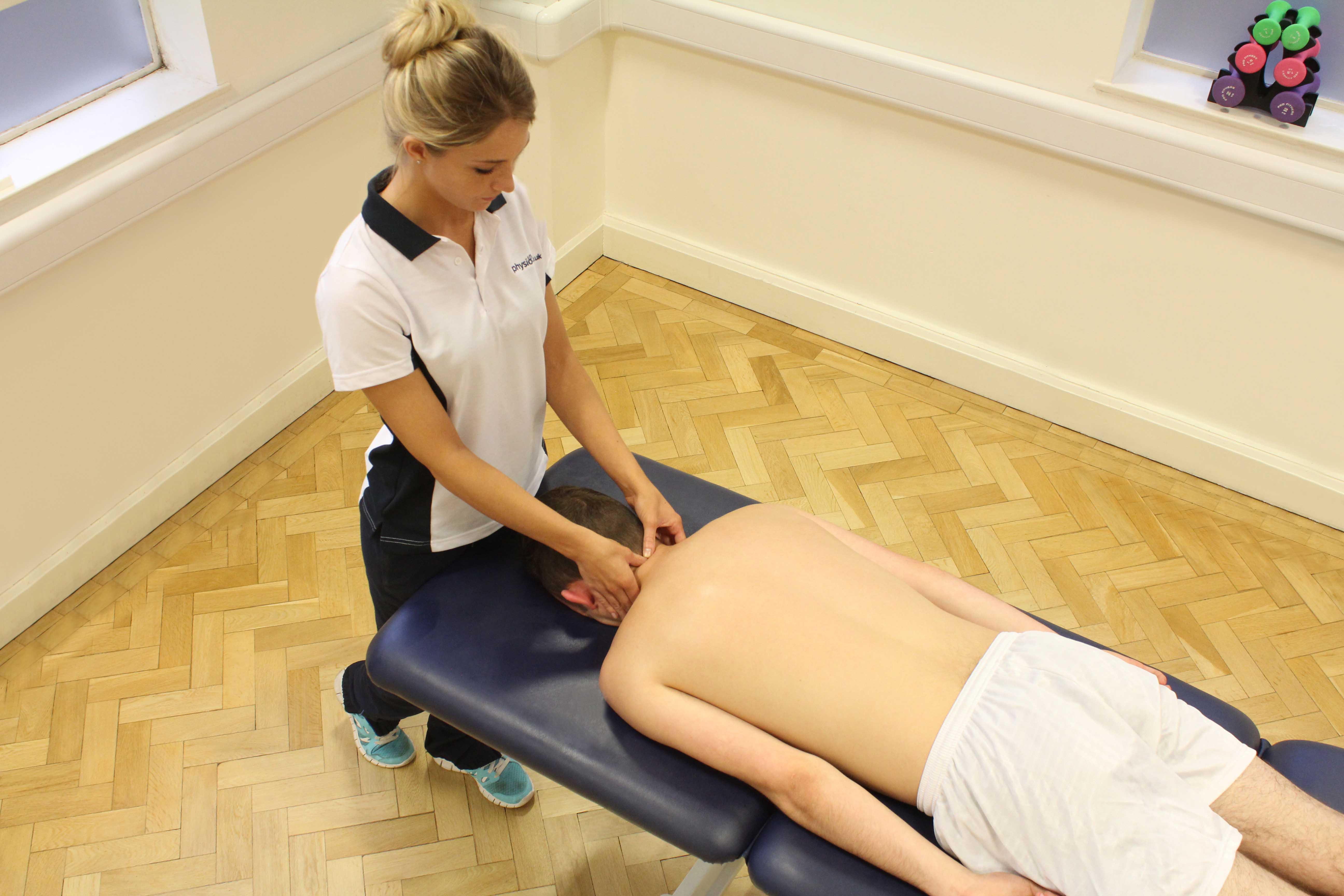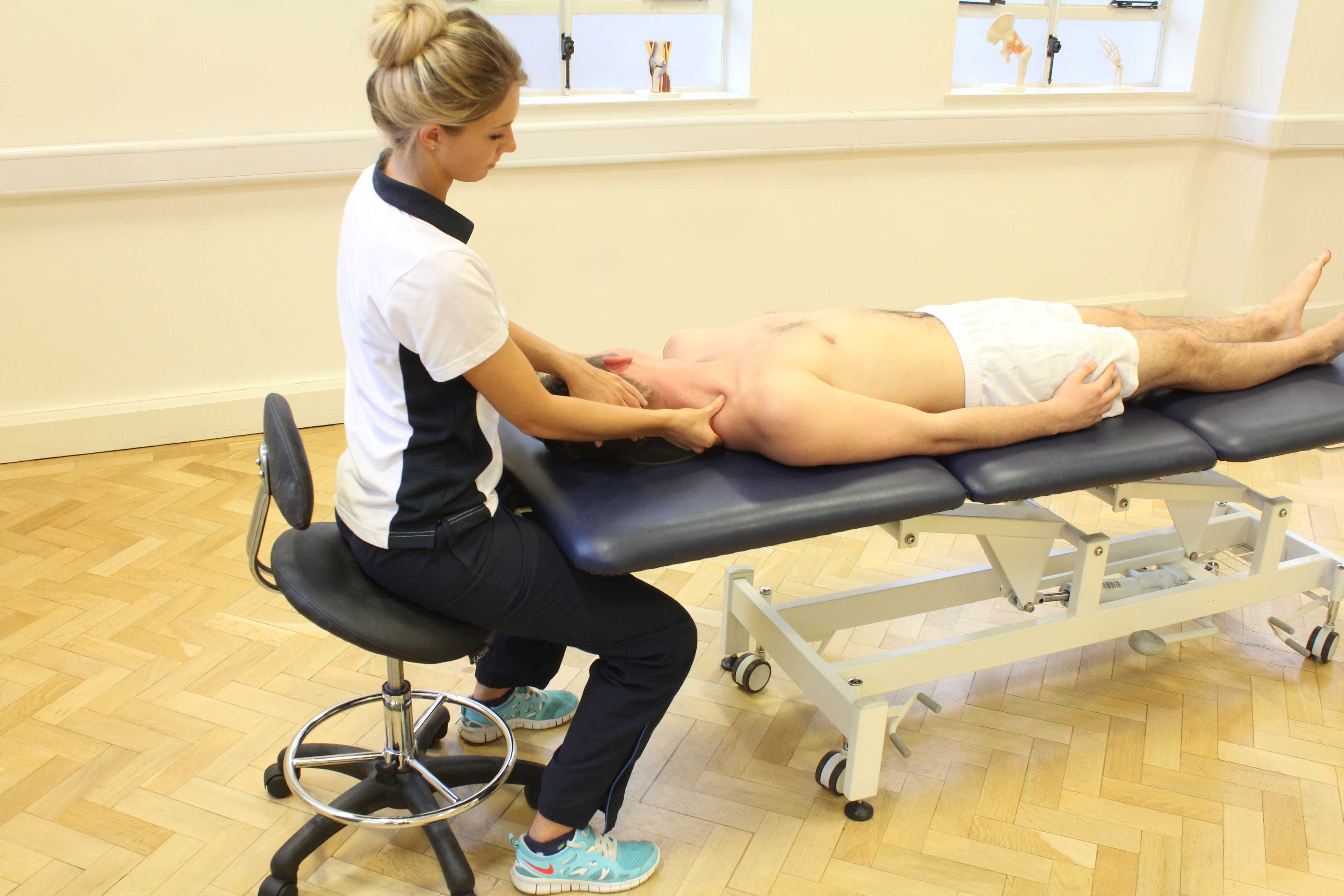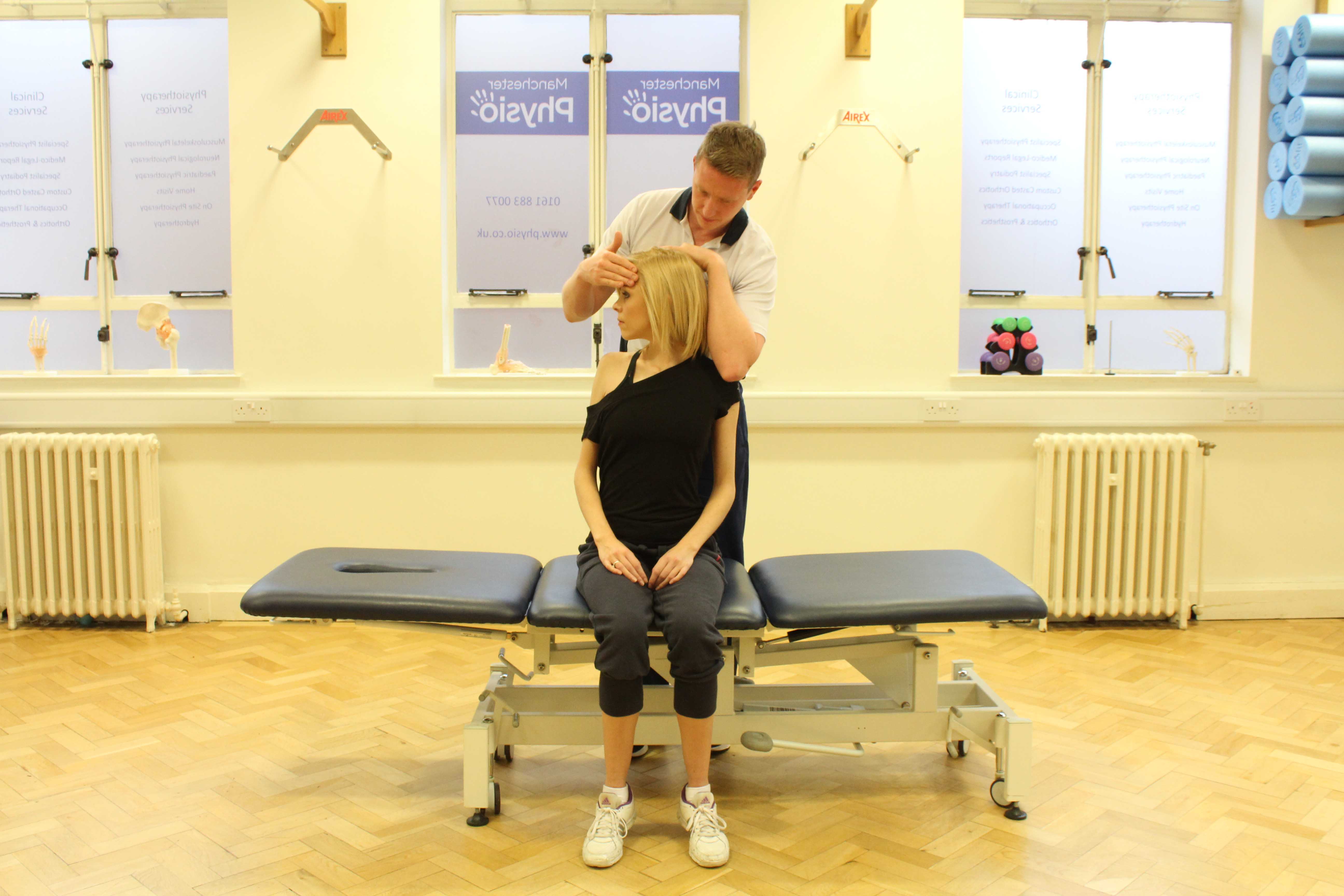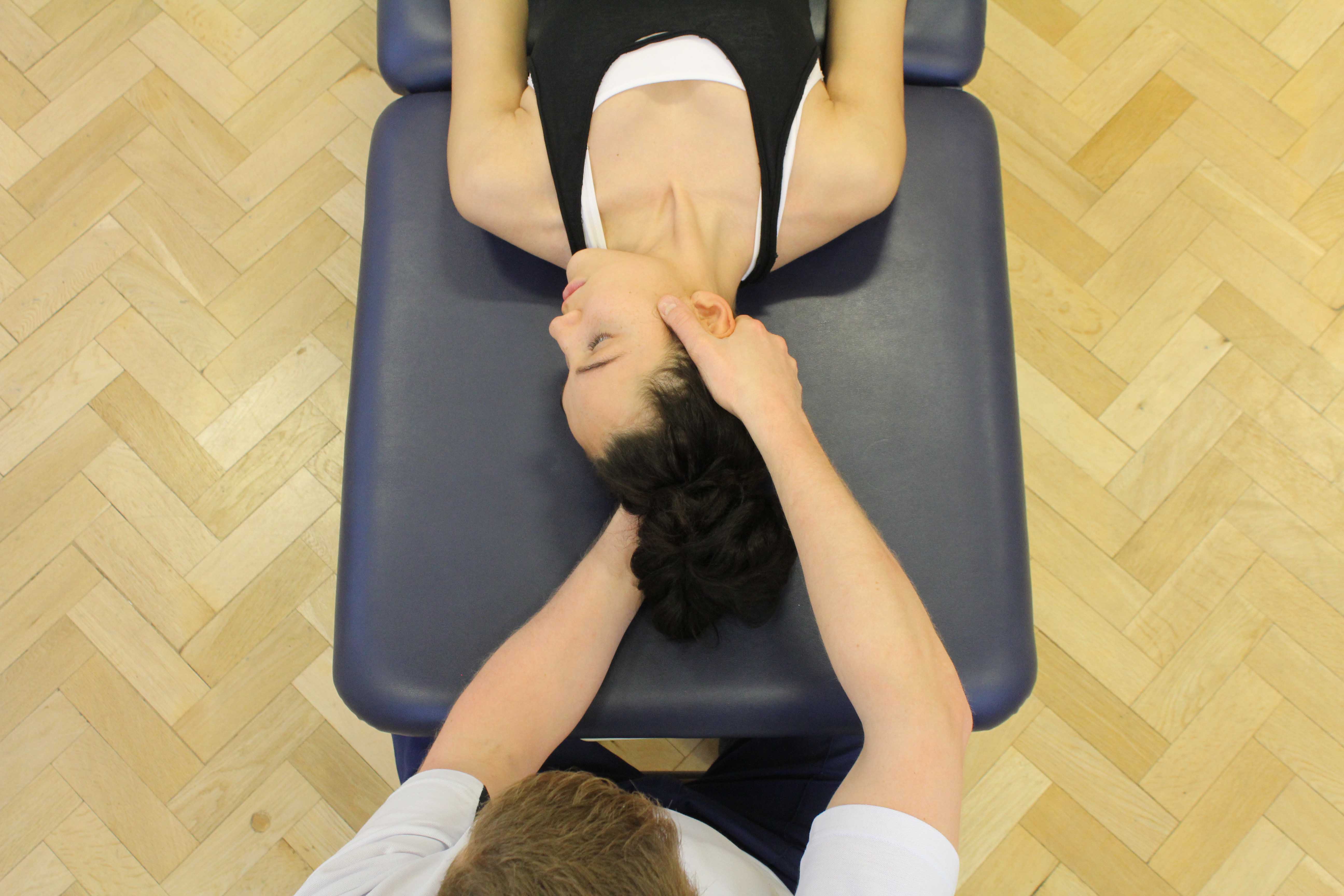What is a slipped disc in the neck?
The neck is made up of seven bones called vertebrae. In between these vertebrae there are shock absorbing discs. These discs have a tough, fibrous outer layer and a gel-like core.
The spinal cord runs through these vertebrae. Between each vertebra, the spinal cord branches off into smaller nerves. These are called nerve roots and provide a nerve supply the head, neck, shoulders and arms.
If the tough outer layer of the disc is torn, the soft gel-like core can bulge out and compress one of the nerve roots.
A slipped disc can also be called a herniated, prolapsed or ruptured disc. The term slipped disc can be a misleading term. IT is the contents of the disc that move outside of the disc. The disc itself is actually unable to slide or ‘slip’ out of place. Physiotherapy is a very successful method of treating a slipped disc in the neck.
 Above: Mobilisations of the vertebrea in the cervical spine to relieve pain and stiffness
Above: Mobilisations of the vertebrea in the cervical spine to relieve pain and stiffnessWhat causes a slipped disc in the neck?
A disc can herniate, or ‘slip’, if the joints between particular vertebrae are overstrained. This is often caused by if stiffness at some joints leads to increased movement at others. This can alter movement patterns and cause ‘wear and tear’ to these segments.
 Above: Soft tissue massage of the muscle and connective tissues in the neck by specialist MSK therapist
Above: Soft tissue massage of the muscle and connective tissues in the neck by specialist MSK therapistWhat are the symptoms of a slipped disc in the neck?
Slipped discs in the neck occur most commonly between the sixth and seventh vertebrae. A slipped disc in the neck compresses one of the nerve roots in the neck. Symptoms vary dependent on the level of the nerve compression and pain is not always caused in the neck itself. Symptoms are generally one sided and can also be felt in the back of the head, the neck, the shoulder, the shoulder blade, the arm, and the hand. Other symptoms of a slipped disc in the neck include:
What should I do if I have a slipped disc in my neck?
If suspect that you may have a slipped disc in your neck then you should arrange a physiotherapy assessment as soon as possible.
What shouldn’t I do if I have a slipped disc in my neck?
If you have symptoms that lead you to suspect that you have a slipped disc in your neck then you should not ignore the problem. You should seek advice form a medical professional as soon as possible.
 Above: Experienced Physiotherapist conducting an assessment of the cervical spine, muscles and connective tissues in the neck
Above: Experienced Physiotherapist conducting an assessment of the cervical spine, muscles and connective tissues in the neckPhysiotherapy treatment for slipped disc in the neck.
Physiotherapy is vital in the successful treatment of a slipped disc in the neck. Initially, your physiotherapist will be able to assess your neck and provide you with a diagnosis. Following the diagnosis, your physiotherapist will design a treatment programme specifically for you. Treatment often focuses on range of movement and muscular control. Particular attention is paid to the deep stabiliser muscles of the neck. If you have altered patterns of movement your physiotherapist can work on correcting these movement patterns to redistribute the forces of movement away from the overused and vulnerable vertebral joints. You will also be taught stretches to lengthen any structures that are shortened and nerve mobilising exercises to maintain your nerve length. Other treatments may include:
Does a slipped disc in the neck have any long-term effects?
Conservative treatment (physiotherapy) is not effective for every single patient.
If the herniation of the disc is very severe emergency surgery may be performed before physiotherapy is even attempted.
For the patients that have had physiotherapy and their symptoms remain severe after 12 weeks, a surgical procedure to remove the portion of the disc that is compressing the nerve may be considered. There are numerous types of surgery for a slipped disc in the neck.
 Above: Stretches and mobilisations of the cerival spine, muscle and connective tissues in the neck
Above: Stretches and mobilisations of the cerival spine, muscle and connective tissues in the neckTo arrange a physiotherapy neck assessment call Physio.co.uk on 0330 088 7800 or book online.

 0330 088 7800
0330 088 7800





































